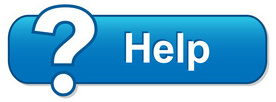Headings and Titles
Use your keyphrases and keywords in your page meta titles and first paragraph where ever possible.
In products, remember to include the word "shoe" in it if you are selling shoes. People often make the mistake of only using internal product names and codes, which are of no relevance to a potential new customer doing a search for generic product category.
The page heading of a website, also known as the H1 or Heading 1, is the most important heading on a page. The h-tag, or type of heading, tells Google that this is more important than headings with larger h-tags, such as H2 or H3.
By default, each page on your site should (depending on the template used and it's settings) give your page heading an H1 tag. Sometimes this doesn't happen, especially on a home page, so you will need to check and correct this.
Use only one H1 heading per page, and include your keyword within it. Other headings should be set at H2 or H3. You can do this by highlighting the heading, then selecting the drop down arrow next to 'Paragraph" when using Tiny editor, or selecting the H when using the drag and drop editor.
The Meta title
The META title is displayed verbatim in search results. Control the meta title, control your search result wording.
By default the META title is the same as the page heading with the addition of your company name as a suffix. e.g. Page Title - Company Title
Changing your META title
Your META title can be specifically changed on the RENAME area of each page. This will override the default Page Title - Company Title description.
Changing your Company Title suffix
You can change this default suffix in the "search engines" area of your website, scroll down the left menu for a gray button called "search engines"
The META title is also displayed as the bolded title in most search engine results.
The best META titles have your keyphrase on the left, followed by an applicable geographic locations, and then your company name.
